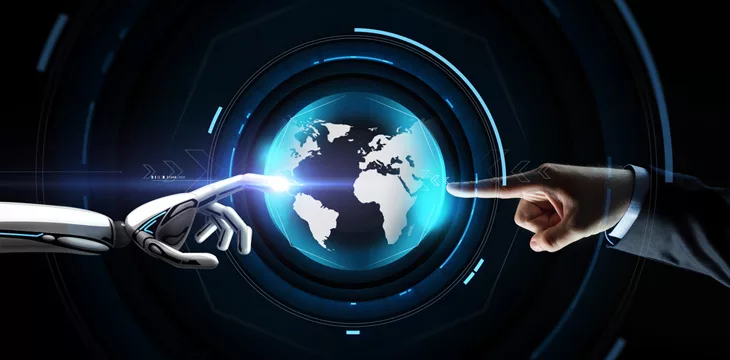|
Getting your Trinity Audio player ready...
|
Microsoft (NASDAQ: MSFT) and the American Federation of Labor and Congress of Industrial Organizations (AFL-CIO) announced a partnership to address labor workers’ concerns regarding the impact of artificial intelligence (AI) on employment, specifically, the concerns that many individuals have about AI’s ability to replace jobs and displace workers.
A survey commissioned by the AFL-CIO in August revealed that 70% of respondents were concerned that AI would play a role in job displacement and inequity. Now, Microsft and the AFL-CIO are working together to curb those concerns.
“By working directly with labor leaders, we can help ensure that AI serves the country’s workers,” said Brad Smith, vice chair and president of Microsoft. “This groundbreaking partnership honors the rights of workers, learns from the advice of labor leaders as we develop technology, and helps us provide people with the skills that will become essential in a new AI era.”
Goals for empowering workers in the AI era
The partners have set out to accomplish three goals:
Educating labor leaders and workers about AI technology trends
Microsoft plans to conduct formal learning sessions facilitated by AI experts. These sessions will provide labor leaders and workers with insights into AI’s current and future landscape.
Incorporating worker perspectives in AI development
There will be a direct feedback mechanism between labor leaders, workers, and Microsoft’s AI developers. Starting this winter, the partners will hold labor summits that use the feedback to design “worker-centered technology.”
Influencing public policy to support frontline workers’ technology skills and needs
The AFL-CIO and Microsoft will work together on policy advocacy, their main focus will be equipping workers with essential skills for an AI-driven economy.
“This partnership reflects a recognition of the critical role workers play in the development, deployment, and regulation of AI and related technologies,” AFL-CIO President Liz Shuler said. “The labor movement looks forward to partnering with Microsoft to expand workers’ role in the creation of worker-centered design, workforce training, and trustworthy AI practices. Microsoft’s neutrality framework and embrace of workers’ expertise signals that this new era of AI can also catalyze a new era of productive labor-management partnerships.”
The reality of AI in jobs
Earlier this year, Goldman Sachs (NASDAQ: GS) estimated that AI can replace 300 million full-time jobs.
But is that figure overstated? Ironically, AI still needs a human touch; whether it’s a fact checker to ensure the accuracy of automated outputs, an operator to initiate the execution of an automated process, or the software developers that create and update AI models, humans remain integral in AI systems.
Despite AI’s abilities to streamline operations and optimize resource allocation, current applications in both consumer and enterprise settings position AI as more of a complementary tool than a full-on replacement.
In support of this perspective, a recent survey by the Pew Research Center (PRC) in July revealed that 32% of U.S. workers in information and technology sectors view AI technology as a benefit rather than a detriment to their roles. This sentiment underscores a key aspect of AI’s current state. While it offers transformative potential, at this point, AI is more commonly used to enhance human productivity rather than to outright replace human labor.
Navigating AI challenges facing the workforce
Regardless of the impact—positive or negative—that AI may have on the workforce, the partnership between Microsoft and AFL-CIO is a crucial step in shaping a future where technological innovation and worker welfare can coexist.
The duo is taking a proactive approach to addressing the challenges and opportunities presented by AI and ensuring that the voices and concerns of the labor force are heard and integrated into the development and implementation of AI systems.
In order for artificial intelligence (AI) to work right within the law and thrive in the face of growing challenges, it needs to integrate an enterprise blockchain system that ensures data input quality and ownership—allowing it to keep data safe while also guaranteeing the immutability of data. Check out CoinGeek’s coverage on this emerging tech to learn more why Enterprise blockchain will be the backbone of AI.
Watch: Blockchain & AI unlock possibilities

 01-08-2026
01-08-2026 




